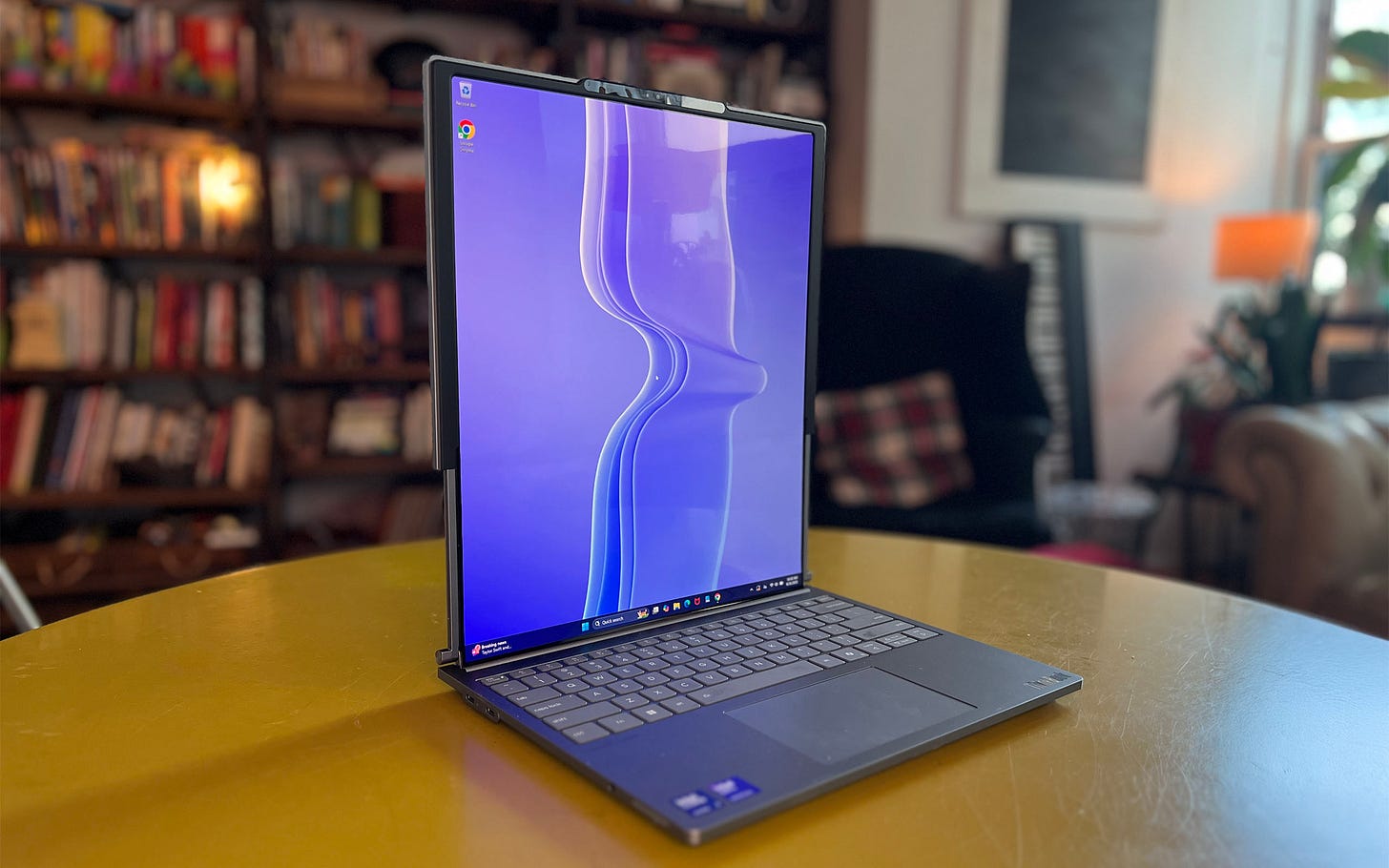AI Agents vs. Bad UX
When agentic AI tools struggle with modern websites, the answer might be: "Let them fight!"
Some people like to watch long-form livestreams of work-in-progress, from birds building a nest to cargo ships unloading at a dock. Me? I'm fascinated watching AI agents try to navigate modern websites with nothing more than a browser address bar and a cursor.
Now that OpenAI has made agents available in ChatGPT for subscribers, many more people have access to easy-to-use agentic AI. Even better, you can watch your agent in real time, navigating the real world in its own browser window, offering stream-of-consciousness commentary as it works on a task that might be especially poorly suited for its logical mind -- navigating modern websites.
I've asked GPT's agent, which operates semi-autonomously, to perform a few tasks for me, most of which require it to leave the confines of its chatbox and go out into the wilds of the open internet. Usually, I'm asking it to collect information that must be cobbled together from different websites -- and different sections within those websites.
Last week, I prompted an agent to find a series of my articles I had written, then generate a CSV document with each article’s headline, URL and publish date for those articles, so I could have a nice spreadsheet of some of my work. The end goal: To walk away with an organized spreadsheet of my work for future reference.
You'd think I asked it to put a man on Mars.
I watched this poor AI agent open its own web browser window, then try to figure out the best way to find the information I was looking for. No matter how lifelike it may occasionally feel, an AI is still just a computer program, guided by rigid logic. You know who's not guided by rigid logic? Seemingly anyone designing websites.
The agent was constantly frustrated by the mix of buttons, menus, sub-menus, hamburger menus, modal pop-up menus and breadcrumb trails that seem to clutter every website. Buttons didn't work as expected, menus led to recursive loops, navigating backwards required different clicks than navigating forwards, as well as several 502 and 504 errors.
Other agentic tasks, like perusing online shopping sites for specific types of products, led to similar roadblocks and frustrations. And the effect is compounded by how these agents work. When an AI is given a task, it usually produces an answer, from a quick yes/no to a detailed report, in seconds. AI agents, however, navigate the open web in real time, no faster than you or I might -- and often much slower. Even a simple agentic task might take 15-20 minutes to complete, at least part of which is the tool struggling with website menus and sitemaps.
Writing by/for computers
The overwhelming power of Google as a search engine has already changed the way we write on the web. For years, much news and information content has been essentially written for Google's algorithm, with the human reader as a secondary audience. Now people are shifting to writing for AI -- hoping that AI tools will use their articles as sources for answers, citing the original article/publication along the way. What used to be called SEO is being reimagined as GEO (the latest of several proposed names for the idea I've heard), or Generative Engine Optimization.
What happens when more and more of our interactions with websites, from Amazon to indie businesses to the DMV, are handled by AI agents instead of humans? For all our flesh-and-blood flaws, we've become pretty good at sussing out how to navigate websites, even when (or especially when) it requires counterintuitive thinking. But just as so much writing is now formatted to be read primarily by computers -- a bad thing, but important to acknowledge -- how will websites change when their primary readers/users are likewise computers?
The typical SEO/GEO-tuned news article benefits from clear use of data and specs in charts and tables, FAQ sections, and clear H1/H2/etc. formatting. Readability trumps all else. Maybe there's a lesson in there for websites that find the need to optimize their UX for agentic visitors.
If that does happen, it might be a boon for us mere humans as well. Imagine clear, uncluttered navigation and menus. Breadcrumb link trails that make sense. Modals that... well, no more modals. The AI agent's need for clarity and functionality could result in a cleaner, less-cluttered web experience for the rest of us. Imagine that -- one arguably bad human invention, AI, finally fixing problems caused by another arguably bad human invention, modern UX and website design.
And if the AI people and the UX people can't figure out who the top dog in this battle is, then, as the scientist watching King Kong square off against Godzilla says, "Let them fight!"
Rolling with the Lenovo ThinkBook Plus Gen 6 Rollable Laptop
I love a good concept-car-style laptop. Something with unique features or a crazy design that stands out from the crowd. That might be the first dual-screen-no-keyboard laptop I reviewed way back in 2011 (the Acer Iconia!) or any of Razer's far-fetched concept pieces, like the never-released Project Valerie triple-screen laptop.
Lately Lenovo has been killing it with weird and wild laptops that actually make it from prototype to shipping product. There's last year's second-gen X1 Fold -- basically a laptop that works like a foldable phone -- or the ThinkBook Plus Gen 4 from 2023, which had an OLED screen on one side of its rotating lid, and a color E Ink screen on the other.
And now there's the ThinkBook Plus Gen 6 Rollable Laptop. It's a fairly standard 14-inch laptop with a square-ish 5:4 aspect ratio. But with the push of a button, or wave of a hand gesture, it sprouts into a tall 16-inch portrait-style screen. I first saw it at CES 2025, but now I've got a test unit in hand.
I used to call expensive ($3,299) systems like this "executive laptops," as in no regular joe could justify buying one, but your CEO might see it in an article (or newsletter...) or video and say, "Someone get me that laptop!"
But unlike some other laptops with unique, some would say gimmicky, features I've seen, the ThinkBook Gen 6 feels like it might be more practical than you'd initially think. The elongated screen is great for going over long pages of code, long written docs, reading long-form articles, or dealing with long spreadsheets.
For example, I've already found that I really like editing manuscripts on the extended screen. I also occasionally have to dive into the HTML of an article page at my day job, and the giant screen makes that process easier.
But here's the best indication I have that this idea is less crazy than it looks. I've shown off the rolling screen to several people, with varying levels of tech savvy, and each one of them absolutely loved it. Giant gaming laptops, folding-screen laptops, handheld gaming PCs, etc. have all failed to impress most non-techies, but this rolling/expanding screen idea was a winner, according to my informal polling.
Now, keep in mind this is definitely a first-gen product. It's an Intel Core Ultra 7 laptop with 32GB of RAM and 1TB storage. That's maybe a $1,500 laptop, but this costs more than twice as much. Also, the rolling mechanism moves slowly and whirs audibly, which is a reminder that there are many more moving parts, and potential points of failure, than a typical laptop.
There's a webcam-controlled hand gesture to roll the screen up or down. It's the best way to demo the system for friends, but in practice, the feature is slow and requires precise hand placement. There's also a physical button to activate the mechanism, which is what you'd use most of the time.
But I assume this flexible OLED screen itself is the same or similar to the one in the X1 Fold, so it's been through a couple of generations and has legs. There's still a telltale hint of a crease across the center, something folding phones have been trying to minimize for years. I am also surprised the screen is not a touchscreen.
While I think I'd feel a little awkward pulling this out at a coffee shop, it would be a great conversation starter. At home, however, I find myself using it more and more, sometimes just so I can watch the fun animations that play every time you roll or unroll the screen.
In one, a car drives up a long road through an expanding forest (and drives back down when you shrink the screen). In another, a Microsoft-like ribbon design curls up. But my favorite is the one where a group of mysterious silhouettes gather around a Lenovo-labeled monolith, like worshippers from the cult of the prototype laptop.
The Cheat Sheet
> Read my book here: The Tetris Effect
> Threads: threads.net/@danack
> Bsky: danackerman.bsky.social
> LinkedIn: linkedin.com/in/danackerman
> TikTok: tiktok.com/@danacknyc
> YouTube: youtube.com/danackerman
> IG: instagram.com/danack
> MC News: microcenter.news



